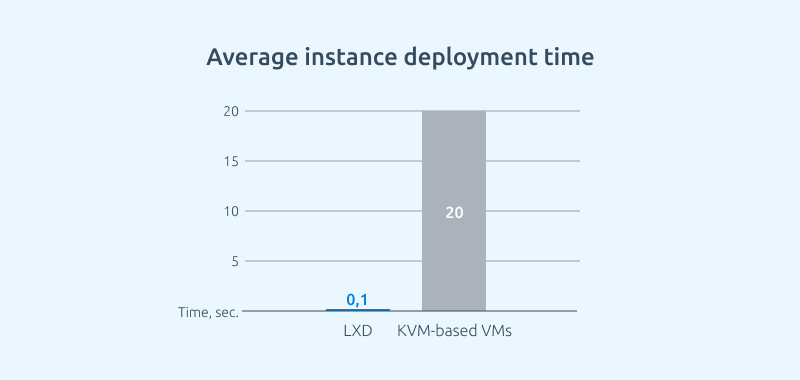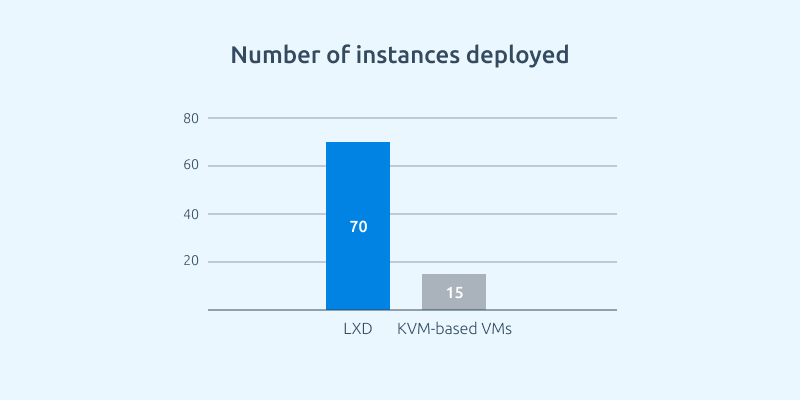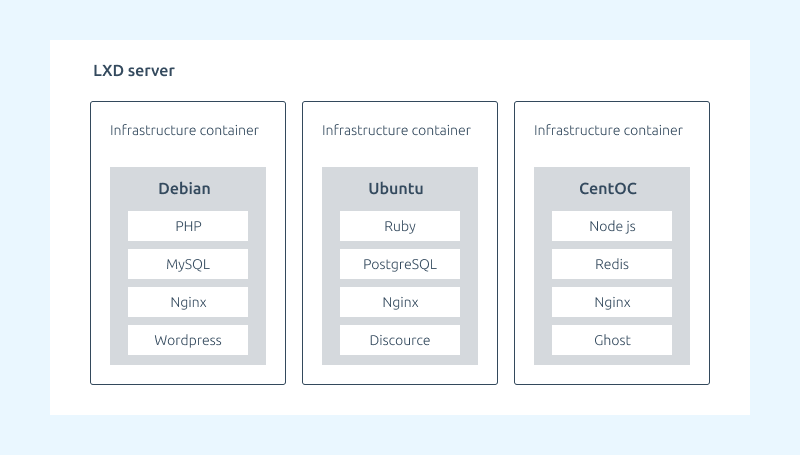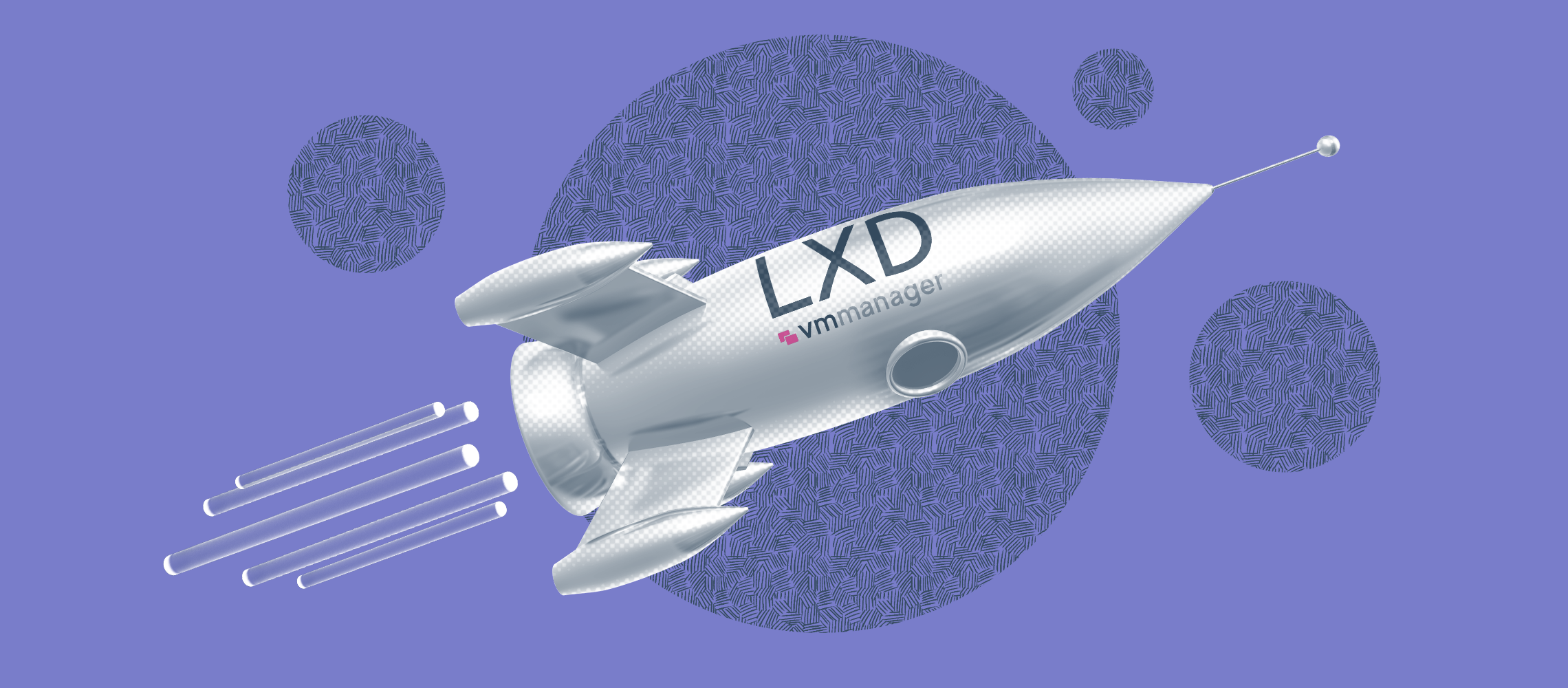LXD is a hypervisor by Canonical. You can use it to create containers that work as full virtual machines with a Linux system.
LXD technology helps increase hardware utilization for providers who provide VPS servers. Unlike hardware virtualization, LXD does not require allocating RAM for the Linux kernel for each container. This allows deploying more instances per piece of equipment. We did a comparative test of LXD and KVM virtualization and calculated how many VPS for WordPress websites can be created with each technology.
Contents
Test environment
The test involved a dedicated server based on an Intel(R) Xeon(R) CPU E3-1230 v3 with a 16 GB RAM configuration used to run LXD containers and KVM servers.
We simulated an average customer's VPS with a website. Instances were deployed with the following settings:
- ОС CentOS 7,
- PHP 74-fpm,
- MySQL 5.5 database
- WordPress
Parameters measured:
- Deployment time
- Number of instances deployed
Test results



LXD containers deploy 200 times faster than KVM. In the test, LXD virtualization showed 4.6 times higher density than KVM.
To claim that LXD virtualization is 4.6 times more profitable than KVM would be rough. The calculations do not take into account that other factors affect the final cost of VPS for the client (and hence the revenue for the provider). For example, the functionality and reliability of the technology. Let us compare them.
OS installation possibility
With KVM virtualization, you can create virtual servers with fully isolated guest systems. Thanks to this, you can deploy a server with any OS, including Windows.
LXD technology makes it possible to create instances with any OS from the Linux family. The technology is suitable for any task where these systems are used: websites, development, microservices.
Isolation and security
Virtual machines on KVM are completely isolated from each other. Hardware virtualization is used.
LXD is a container virtualization technology. However, in terms of reliability, it does not differ from the hardware one: instances on LXD are completely isolated from each other. For users, they work as full-fledged virtual machines. The сgroups, mechanism is used, which allows limiting computing resources.

When LXD containers can replace KVM
LXD containers can replace KVM virtualization where Linux systems are used. At the same time, they increase equipment utilization and thus help save money where a large number of isolated containers need to be provisioned.
Combine LXD and KVM virtualization technologies with VMmanager platform
VMmanager is a virtualization management platform. It can be used to provide VPS to your clients:
- Deploy virtual machines on KVM;
- Provide instances on LXD;
- Automatically control payments through ready integrations with popular billing systems;
- Offer clients additional services: backups, monitoring, notifications.
VMmanager has a simple graphical interface and automates routine tasks: issuing virtual resources, installing operating systems and scripts, and backups. VMmanager reduces the load on technical support and helps to save money.


